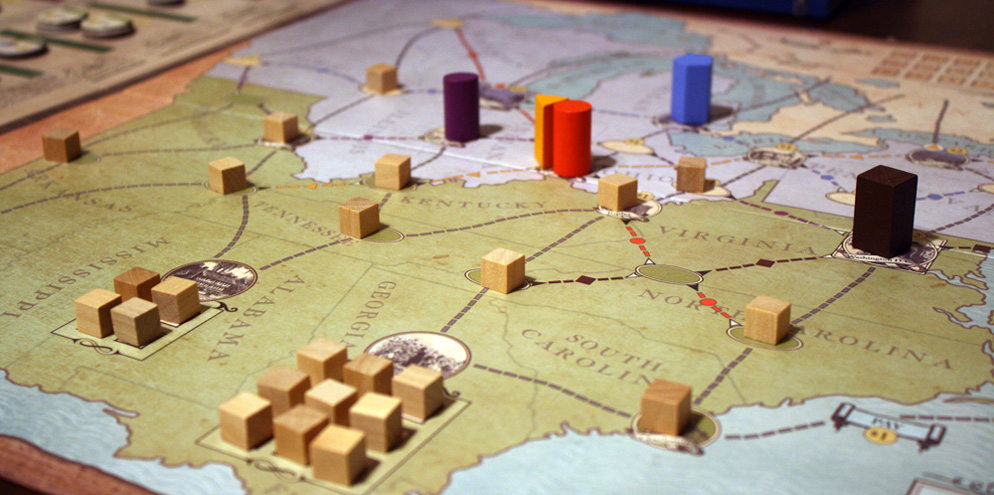
 As an American, I have a love/hate affair with my country’s history. We’ve done some things we can all be proud of: Kicking some British butt in the revolutionary war, the bill of rights, Batman comics, and the ’85 Chicago Bears (to name a few). But we also have a dark side to our history. One of the first that comes to mind is our history with slavery and the abolitionist movement. It’s hard to believe that there was ever a time where slavery was normal and worth fighting to keep, but we live in different times now, I guess. But this brings us to the theme of our newest review, Freedom: The Underground Railroad. For those not familiar with American history, the Underground Railroad was a system for helping slaves escape their life of bondage to the freedom in the North.
As an American, I have a love/hate affair with my country’s history. We’ve done some things we can all be proud of: Kicking some British butt in the revolutionary war, the bill of rights, Batman comics, and the ’85 Chicago Bears (to name a few). But we also have a dark side to our history. One of the first that comes to mind is our history with slavery and the abolitionist movement. It’s hard to believe that there was ever a time where slavery was normal and worth fighting to keep, but we live in different times now, I guess. But this brings us to the theme of our newest review, Freedom: The Underground Railroad. For those not familiar with American history, the Underground Railroad was a system for helping slaves escape their life of bondage to the freedom in the North.
In Freedom: The Underground Railroad, published by Academy Games, players take on the role of conductors in the Underground Railroad. In this cooperative game, players help gain support for the abolitionist cause all while helping slaves escape to freedom in Canada. Can a board game do justice for a theme that has the potential to ruffle a lot of feathers? Read on to find out.
Freedom: The Underground Railroad is a cooperative board game for 1-4 players that takes about 90 minutes. Freedom is best played with any number of players.
Game Overview:
Each player will choose a conductor to play and each has a unique special ability that will aid the players during the game. The players have exactly 8 rounds to both help enough slaves escape to Canada, and also purchase enough support tokens for the abolitionist cause. If they can do both of those before the end of 8th round, the players will win. If they either take too long or lose too many slaves, the game will end in a loss.
Components:
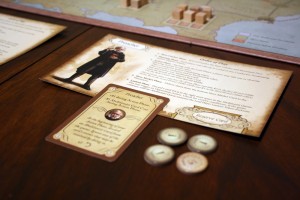
Freedom had the potential to go horribly wrong when Academy Games decided to tackle this theme. I’ve heard at least one person say they wished Academy Games had used sculpted minis instead of the abstract cubes. I disagree pretty strongly with that statement. I think Academy Games made the perfect choice for the components in Freedom. Specifically, I’m talking about both the slave catcher tokens and the cubes used to represent the slaves. Both are abstract representations of what they are supposed to be and function just fine during the game. The slave catcher tokens seem to almost tower over the game cubes and provide a real presence of what you want to avoid. There is not really a great way to portray a slave in any game, but to me, the abstract nature of these pieces helps keep the game both tasteful and functional.
The game comes with a large game board that is divided between a map of the US and an area to hold the game’s cards and tokens. In addition to containing relevant game information, the cards are illustrated with photos and facts from history. This helps to make them both useful and educational. I did enjoy reading the bits of history on all the cards and how they pertained to the movement.
All together, I think Academy Games did a fanatic job with the components for Freedom: The Underground Railroad. I love the abstract nature of the components and also have enjoyed the educational elements. Each bit and piece also feels high quality in its construction and should hold up to multiple plays.
How to Play:

The game takes a bit to setup, but once the various cards, tokens and other bits are in their right places, the first thing for a player to do is select their conductor. Each are different and have their own special ability and a one-time use ability. Once players are ready to start, the game is divided into 8 rounds, each of which has 5 phases.
1. Slave Catcher Phase: At the start of each round, players roll two dice. This will cause one of the slave catchers to move one space in a specific direction. This can throw a monkey wrench into the players’ well laid plans.
2. Planning Phase: Players may buy up to 2 tokens from the planning board. These are either support tokens (needed to win the game), conductor tokens (allows you to move slaves in the action phase) or fundraising tokens.
3. Action Phase: This is where the meat of the game happens. Players can complete a number of actions including using their special conductor power, using up to 2 conductor/fundraising tokens, or buying/playing an abolitionist card. As slaves move around the board they might attract the attention of the slave catches if they move into a city attached to one of their paths. The can also generate income by moving into a city that provides monetary support.
4. Slave Market Phase: Players take the bottom most slave market card and add those cubes to the slave plantations at the bottom of the board. If the plantations run out of free spaces, the extra slave cubes are moved to the “slaves lost” card. If that card ever fills up and the players need to add another cube, the players lose.
5. Lantern Phase: A cleanup phase where the first player token passes and the abolitionist card track is reset.
After all 5 phases have been completed, the next round begins. If the players haven’t won, by purchasing all the support tokens and getting the required number of slaves to Canada, by the end of the 8th round, they lose.

Game Experience:
At first, I wasn’t sure if I wanted to play Freedom: The Underground Railroad. The theme isn’t one that’s immediately going to jump out at me. But I continued to hear rumblings about how great Freedom was and then I looked at my shelf of board games. I have plenty of fantasy games and more than one game located in historical Europe. Why not try something both new and unique. And let me tell you, I’m glad I gave Freedom a shot.
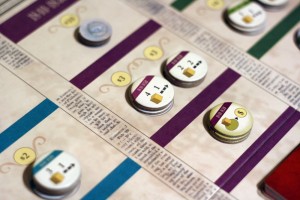
Freedom: The Underground Railroad is a really well made game. I’ve already talked about the excellent components and the educational nature of the game, but what I haven’t mentioned yet is that the game play is really solid. From the first turn on, Freedom will have you glued to the board for the whole 90 minute length. There are many, many hard decisions to make during the game and each one will have lasting effects on your game. Freedom almost feels like a juggling act because there is so much for a player to do. You will always feel like you could just use one more action that turn.
And that’s probably why I lose, a lot, at this game. Freedom is a hard game to win. I think I’m rocking about a 15% win percentage right now. Yeah, not stellar. But let me tell you, those 2 wins were oh so satisfying. Win or lose, one of the great things about Freedom is how gradually it eases you into the game. I’ve seen other cooperative games (Pandemic, Forbidden Desert) where we’ve literally lost on turn two or three. Bad luck combined with suboptimal moves had the game explode in our face. This tends to not happen in Freedom. There is a careful, slow-moving progression to the game where it slowly builds up to its finale. I can think of at least two games we played where we literally lost on the last turn, being only one or two moves short of winning.
And that’s one of the interesting parts of Freedom. Each of your very limited actions will have lasting effect on the game. You may have doomed yourself to a loss in turn 6 and not even know it. Freedom almost feels like a puzzle that needs to be solved. You will be staring at a board of cubes and movement lines and need to figure out how to optimally move everything. Do I move this slave here, knowing it will draw in a slave catcher, but then allow me to move a different slave past him on the other side? As far as cooperative games go, Freedom is a real brain burner.
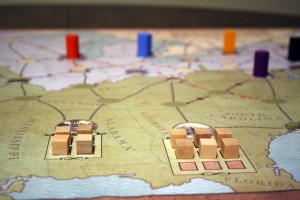
But that also leads to one of the flaws of Freedom, that of quarterbacking (or the alpha player making decisions for everyone). This problem isn’t unique to Freedom, in fact most cooperative games suffer from this to some effect. However, this can be particularly prevalent in Freedom because nothing is hidden from the other players. You have no secret hand of cards, you don’t even have a character on the board to control. Other than your special ability, every player can control every aspect of the game. And due to the puzzle nature of the game and how unforgiving it can be for wasted actions, an experienced player may have a hard time watching as a newbie makes a suboptimal move. If you have an alpha gamer in your group that tends to take over in cooperative games, then Freedom probably isn’t going to be for you. But for a group that can make decisions and work well together, Freedom can provide hours of challenging entertainment.
But that’s my real only point of contention with Freedom. If you can get past the quarterbacking and the high difficulty, then Freedom is a great game. There are a lot of ways to win and also a lot of ways to lose in this game. The abolitionist cards coming out of a random draw can sometimes make or break your game, but this bit of luck also adds to the replay value. You won’t see every abolitionist card in every game so that little bit of mystery is a nice touch. I, for one, love a challenge in a game, especially in cooperative games. And Freedom isn’t going to pull any punches. If you want to win in this game, you will have to earn it.
Final Thoughts:

Even though I keep losing, Freedom has me coming back again and again. The game is difficult to win, but not cheap. Even my loses are very close games. There is a subtle balance in Freedom that lets you know even though its hard, it’s still really well made. I think Academy Games did an amazing job working with a theme that could have caused a lot of controversy. Instead, they made a learning experience that’s also enjoyable. Yes, the slavery period of America’s history was a bad time for the country, but I think it’s also good to learn from it. I encourage anyone who gets their hands on a copy of Freedom: The Underground Railroad to read all the text on the cards and also the two pages of history in the rulebook. What’s that they say? Those who do not learn from history are doomed to repeat it?
If you are looking for a cooperative game that will challenge your brain power and also provide some educational insight, then look no further than Freedom: The Underground Railroad. This game is a nice break from the fantasy/sci-fi games that are probably overflowing on your gaming shelf right now. Give this one a try today, and good luck, you’ll need it.
If you are interested in getting a copy for yourself, it’s about $50
Final Score: 4.5 Stars – A great game that’s both educational and fun. Just be ready for a challenge because if you win, you’ve earned it!
 Hits:
Hits:
• Great, high quality components
• Challenging game play
• Educational
• New theme that is rarely seen
Misses:
• “Quarterbacking” can be an issue








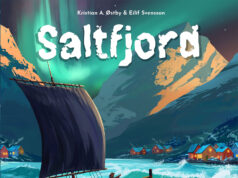
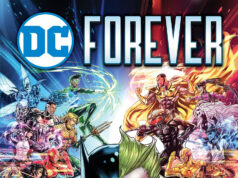












Men are sinful, God will judge them for such, but I also know that God will take a remnant of people out of certain situations, though bad, to get to the end of things and save them from their conditions (in this case in Africa out of animalism and Islamicism).
Slavery AS WE KNOW FROM THAT PERIOD was started by the MUSLIMS, AFRICANS, initially pushed by the English and then the Colonies accepted such (ignorantly) and though England and other European slave traders gave up on it, the USA, continued till a Civil War brought a end.
I am watching the New Roots, and am glad I was not at that period and Black.
12 years a slave and the old Roots will bring things out clearly what sin we had and had to shed blood to end it, North and South and Negro and White.
I ordered the game, cannot wait to get it, I am a wargamer, but academy’s other games are great 1775, 1812, BARBAROSSA, KURSK, POLAND series.